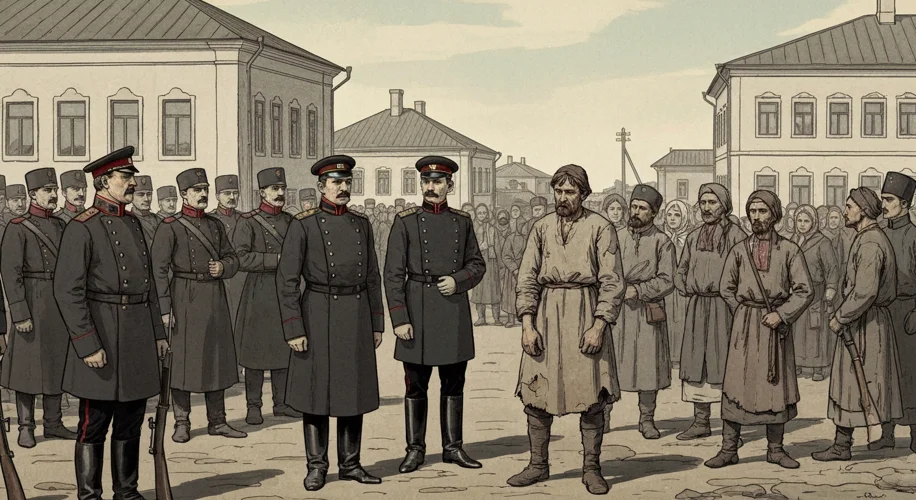The world watches with bated breath as Ukraine battles for its very existence against a resurgent Russia. But this conflict, so stark in its modern form, is not a sudden eruption. Its roots run deep, twisted through centuries of shared history, often fraught with tension, subjugation, and the enduring struggle for Ukrainian identity.
To understand today’s headlines, we must journey back, far beyond the television screens and social media feeds, to a time when empires clashed and borders were fluid, yet the desire for an independent Ukraine was a persistent ember.
The Echoes of Empire: From Kievan Rus’ to Tsarist Dominance
Our story begins not with Russia, but with Rus’, a powerful medieval state centered in Kyiv. For centuries, this was the cradle of East Slavic civilization. But history, as it often does, proved a fickle mistress. The fragmentation of Rus’ and the subsequent Mongol invasion paved the way for the rise of Moscow. Over time, the Grand Duchy of Moscow evolved into the Russian Empire, and its gaze increasingly fell upon its western neighbors, particularly the lands that would become Ukraine.
For centuries, much of Ukraine was divided and ruled by various powers, including Poland-Lithuania and the Ottoman Empire. However, it was the encroaching might of the Russian Empire that would most profoundly shape Ukraine’s destiny. By the 18th century, through a series of wars and political maneuvers, Russia had gained control over a significant portion of Ukrainian territory, particularly the fertile lands of the Dnieper River basin, often referred to as ‘Little Russia’ by the Tsarist regime.
This period was marked by a deliberate policy of Russification. The Tsarist government sought to suppress Ukrainian language, culture, and national aspirations. The Ems Ukaz of 1876, issued by Tsar Alexander II, was a particularly brutal blow. It strictly forbade the printing and public use of the Ukrainian language, effectively attempting to erase Ukrainian identity from public life. Imagine being forbidden to speak your mother tongue, to sing your traditional songs, or to read your own literature – this was the reality for many Ukrainians under Tsarist rule.

The Cossack Spirit and the Seeds of Rebellion
Yet, the spirit of Ukraine could not be entirely extinguished. The legacy of the Zaporozhian Cossacks, fiercely independent warriors who had once carved out a semi-autonomous territory, remained a potent symbol of Ukrainian defiance and self-determination. Their history was woven into the fabric of Ukrainian folklore and national consciousness, a constant reminder of a time when they were masters of their own destiny.
Numerous uprisings and movements sought to assert Ukrainian autonomy throughout the 18th and 19th centuries. While often brutally suppressed, they kept the flame of independence alive, demonstrating a persistent desire to break free from imperial control.
The Tumultuous 20th Century: War, Revolution, and Brief Independence
The 20th century brought seismic shifts. The collapse of the Russian Empire in 1917, following the Bolshevik Revolution, created a window of opportunity for Ukraine. For a brief, tumultuous period, Ukraine declared its independence, forming the Ukrainian People’s Republic. However, this nascent state found itself caught in the crossfire of warring factions – the Bolsheviks, White Russians, and various nationalist groups. The dream of a sovereign Ukraine was tragically short-lived.

Following the Russian Civil War, Ukraine was forcibly incorporated into the Soviet Union as the Ukrainian Soviet Socialist Republic. Despite being a constituent republic, Ukraine’s autonomy was severely curtailed. The Soviet era, while bringing industrialization and modernization, was also marked by immense suffering. The Holodomor, a man-made famine in the 1930s, deliberately orchestrated by Stalin’s regime, claimed millions of Ukrainian lives. It was a brutal attempt to break the Ukrainian peasantry and further consolidate Moscow’s control.
Post-WWII and the Lingering Shadow
Even after World War II and Ukraine’s eventual return to the Soviet fold (after a period of brutal Nazi occupation), the desire for independence never truly died. While overt nationalist movements were suppressed, the cultural and intellectual currents pushing for a distinct Ukrainian identity persisted. The Soviet Union, while ostensibly a union of republics, was dominated by Moscow, and Ukrainian affairs were consistently managed with a firm hand from the Kremlin.
Throughout the Soviet period, and indeed long before, Russian geopolitical interests often viewed Ukraine not as a sovereign nation, but as an integral, almost inseparable, part of Russia’s sphere of influence. This perspective, born from centuries of imperial rule and reinforced by Soviet ideology, laid the groundwork for future conflicts. The very idea of Ukraine as a separate, viable nation-state was a concept that many in Moscow struggled to accept.
As the Soviet Union began to crumble in the late 1980s and early 1990s, Ukraine, like many other republics, saw its chance. The declaration of independence in 1991 marked a pivotal moment, a hard-won victory after centuries of struggle. But the historical baggage, the deeply ingrained geopolitical assumptions, and the complex relationship forged over centuries meant that the path to true, unquestioned sovereignty would be long and arduous. The echoes of the past, of empires and subjugation, would continue to reverberate, setting the stage for the profound challenges Ukraine would face in the decades to come.
The historical context is not merely academic; it is a crucial lens through which to understand the current struggle. The deep-seated narratives of shared history, of perceived historical grievances, and of the enduring desire for self-determination are all playing out on the modern battlefield. To comprehend the present, we must first understand the long, complex, and often painful journey of Ukraine’s quest for its own voice.

